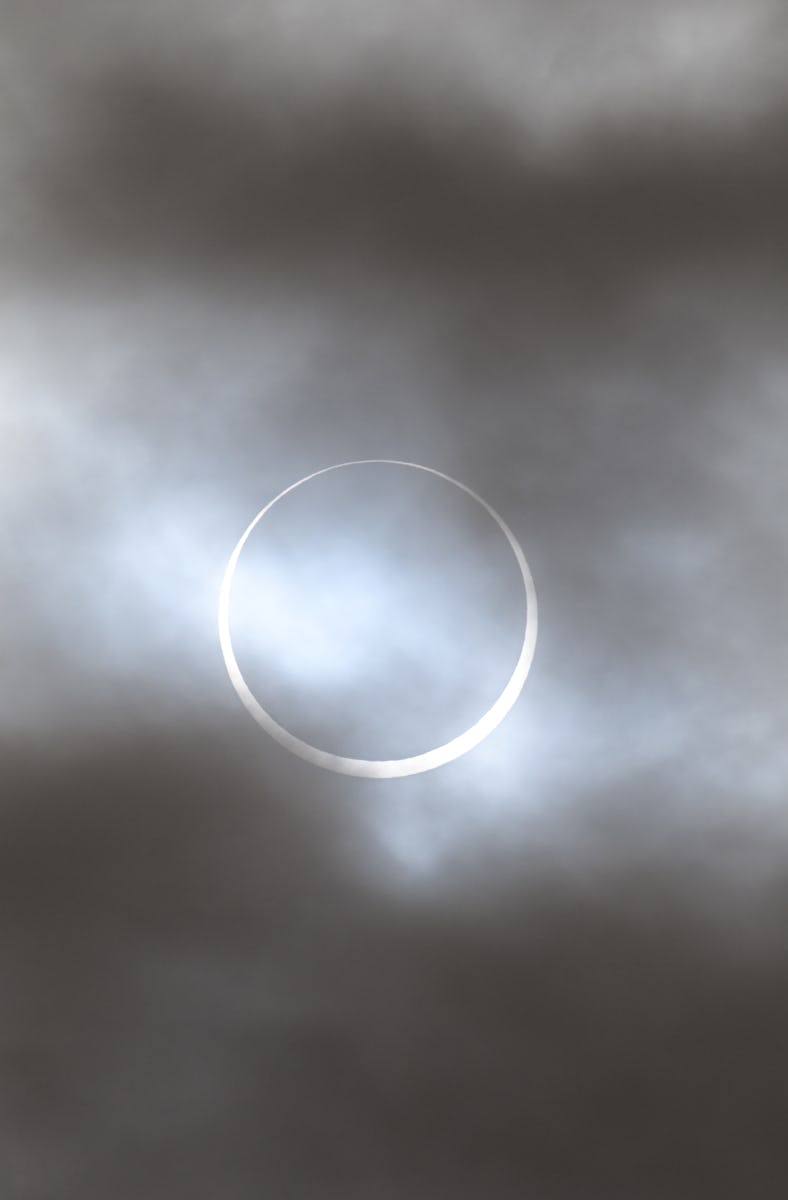What Would A Solar Eclipse Have Looked Like to Neanderthals? Here’s What We Know
We're not the first humans to see a solar eclipse.

For modern people, a total solar eclipse is a fascinating spectacle. It’s also a great chance to reconnect with the fact that we’re passengers on a spinning ball of rock in space, falling in an endless loop around a giant ball of hot gas and thermonuclear explosions. The upcoming solar eclipse is also a good chance to contemplate the fact that humans — and our hominin relatives, including Neanderthals — have lived on this planet and witnessed solar eclipses for hundreds of thousands of years.
What would the Neanderthals have seen and experienced when the Sun vanished from the sky?
“It’s almost impossible to imagine that ancient hominins would have ignored an eclipse, or not noticed,” University of Wisconsin anthropologist John Hawks tells Inverse. What’s harder to guess — and more interesting to speculate about — is what the Neanderthals would have thought and felt when darkness suddenly swallowed the day.
They would not have seen it coming
Today, we know how to predict eclipses years in advance (and calculate the dates of past eclipses going back thousands of years ago). That's a skill humans developed in the last few thousand years, mostly because a newfangled invention called agriculture meant that it was suddenly important to understand the motions of the Sun and the Moon and how they related to the changing seasons.
“Our knowledge of eclipses, including the ability to predict them, comes from the agriculture-driven florescence of astronomy,” says Hawks. “Neanderthals and other ancient humans who lived by foraging natural foods were also affected by seasons and weather, but in somewhat different ways compared to agricultural peoples. There’s no reason to think that they could predict eclipses accurately.”
It would have been a big event
Most of us only see one or two full solar eclipses in our lifetimes. According to everything we know about Neanderthals from their bones, they had similar lifespans. So an eclipse wouldn’t have been a common occurrence, but it would, just maybe, have been an event that people would have heard described by their relatives and friends.
A Neanderthal watching an eclipse might know that her father once saw something similar and that the Sun returned, but she wouldn’t necessarily know the Sun was going to return this time. Today, we know what causes a solar eclipse, and we can enjoy the little thrill of a few minutes of apocalyptic darkness, safe in the knowledge that the Sun will be back before “Total Eclipse of the Heart” can finish playing on Spotify. But 50,000 years ago, nobody knew that.
People would have had plenty of time to notice that something strange was happening in the sky, recall stories of past eclipses, and wonder what to do about this one.
“A solar eclipse is an interesting timeline, because the longest ones last 2 to 3 hours from the first bite the Moon takes out of the Sun until the last, with 3 to 7 minutes of totality or annularity,” says Hawks. “That’s sort of like a sports event, around the time that people pay attention to a big social activity, and long enough for people to gather together and remark on what is happening, even if they are dispersed for hunting or foraging.”
The rest is a mystery
It’s reasonable to imagine that Neanderthals might have passed down stories about “that day the Sun disappeared.” What’s harder to imagine is how they would have explained it to themselves and each other. Neanderthals didn’t leave any written records or even any cave art depicting eclipses (or other astronomical events).
Anthropologists often look to modern hunter-gatherers for examples of how our ancient relatives might have viewed the world; the idea is that a similar lifestyle might give rise to a similar worldview. That’s really useful for figuring out, for example, how large a group Neanderthals might have lived in, or how often they might have moved from place to place. But it’s harder to compare abstract things like spiritual beliefs or ideas about cosmology.
Among modern people who still make their living hunting and gathering, there are as many explanations for solar eclipses as there are cultures — or perhaps more: bad omens, the works of evil spirits or celestial monsters, or the Sun hiding out. In some groups, spiritual leaders would perform rituals to try to bring back the Sun (the nice thing about that is that it always appeared to work).
Archaeological evidence from places across Eurasia tells us that Neanderthals created art and jewelry: paintings on cave walls, decorated shell beads, and designs carved into bones. That suggests that they could think in abstract ways. Additionally, evidence suggests they buried their dead, which hints that at least some groups of Neanderthals may have believed in a life beyond this one.
“We can only speculate about what this experience may have been like for the earliest human groups,” says Hawks. “I think the important thing is that there was never any one way of experiencing the world for early people. They had many cultures, which had their own varied beliefs over many thousands of generations.”